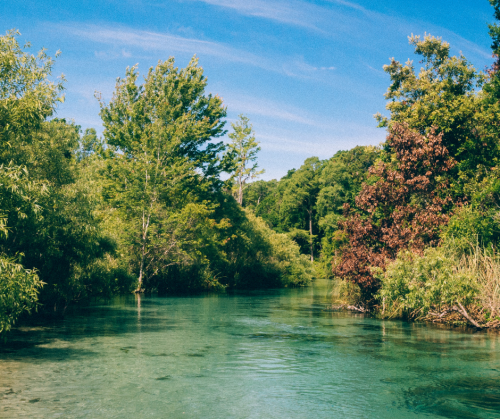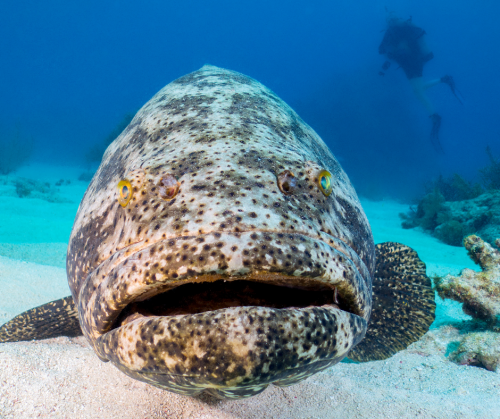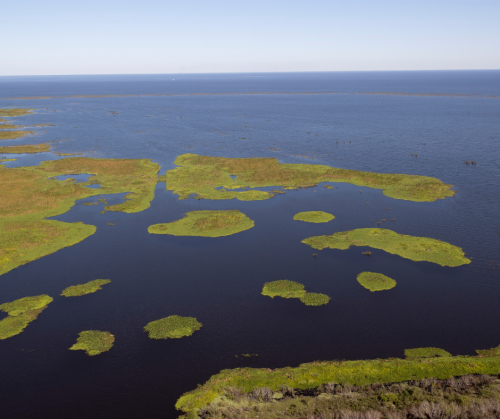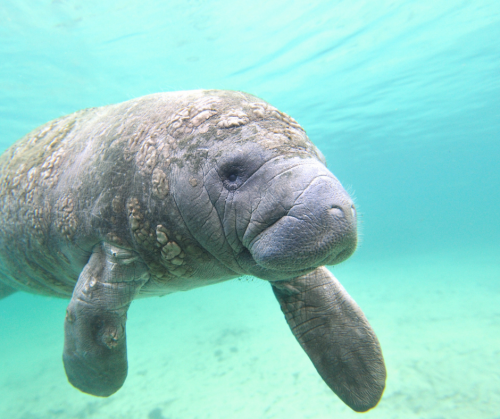To pair with the rest of our educational content in each Earth to Florida newsletter, we bring you monthly updates on statewide environmental news. Read on below to see what we found for the months of February and March:
16 Florida Stories to Watch
 A new law allows certain Florida waterways to be designated as special protection zones. Commissioners in Hernando County have jumped at the opportunity and applied for a protection zone on the Weeki Wachee River. If the Florida Fish and Wildlife Conservation Commission approves, the zone will prohibit anchoring, mooring, beaching, and grounding of watercraft on the river. Crowding and degradation issues have been a hot topic for the Weeki Wachee River in recent years, and many hope this protection zone will aid the river’s recovery.
A new law allows certain Florida waterways to be designated as special protection zones. Commissioners in Hernando County have jumped at the opportunity and applied for a protection zone on the Weeki Wachee River. If the Florida Fish and Wildlife Conservation Commission approves, the zone will prohibit anchoring, mooring, beaching, and grounding of watercraft on the river. Crowding and degradation issues have been a hot topic for the Weeki Wachee River in recent years, and many hope this protection zone will aid the river’s recovery.- A new study completed by researchers at the University of Miami and the National Oceanic and Atmospheric Administration found that stony coral tissue loss disease can persist in sediment and contribute to the infection of healthy coral. These findings explain how the deadly outbreak has been spreading rapidly throughout Florida’s coral reefs for the last seven years. The scientists involved hope that managers can use the findings to mitigate the further spread of the disease during coastal construction activities, like dredging.
 A 1990 ban on goliath grouper harvest in state waters is being lifted by the FWC, but with several limits and guidelines. However, the ban in federal waters will remain. While restrictions for the goliath grouper are loosening, restrictions on the popular dolphin fish, or mahi-mahi, are tightening.
A 1990 ban on goliath grouper harvest in state waters is being lifted by the FWC, but with several limits and guidelines. However, the ban in federal waters will remain. While restrictions for the goliath grouper are loosening, restrictions on the popular dolphin fish, or mahi-mahi, are tightening.- A juvenile population of giant manta rays, designated a threatened species in 2018, has been discovered in South Florida and the federal government is drawing up plans for their protection. While the main threats are in the Pacific Ocean, the protection of this South Florida population is of critical importance as the area serves as a refuge for the species. A draft of the recovery plan is expected later this year, detailing specific areas of critical habitat that must be protected.
- Florida is set to receive the largest amount of money allocated to climate change protection in the state’s history. A total of $404 million was granted by the federal American Rescue Plan, and $270 million in state money was granted toward other related projects. The funds will go toward 113 projects to install stormwater pumps, elevate and floodproof buildings, convert septic tanks to sewer and restore wetlands. A report from the United Nations’ Intergovernmental Panel on Climate Change states that climate change is already affecting Florida — dying coral reefs, algae blooms and sea level rise are projected to cause economic ramifications for the state. Rising temperatures can also be blamed for a longer allergy season.
- The Indian River Lagoon is one of the most biodiverse estuaries on the continent, but it received a failing grade on a new report from the Marine Resources Council. While water quality has improved, there is an alarming drop in the quantity of seagrass — what the MRC calls the “essence of life in the lagoon.” As a result, MRC Director Lisa Souto is calling for expanded testing. Herbicides, PFAS and other chemicals that may contribute to seagrass loss are not currently included in testing done by the state.
 A new study from The Environmental Integrity Project finds that Florida has more lakes that are too polluted for swimming or aquatic life than any other state in the nation. Lake Okeechobee, which covers 450,000 square acres, is the largest contributor to the findings.
A new study from The Environmental Integrity Project finds that Florida has more lakes that are too polluted for swimming or aquatic life than any other state in the nation. Lake Okeechobee, which covers 450,000 square acres, is the largest contributor to the findings.- Cleaning up the Piney Point facility, the site of a 215-million-gallon wastewater leak that flowed into Tampa Bay last year, may take longer than expected, officials say. While an injection well that would pump polluted water deep underground may be finished by this fall, closing the site completely could take three years or more. In the meantime, strong rainfall or hurricanes could raise the water level and continue to pose problems.
- Failing to take down the Rodman Dam in Putnam County to restore the natural flow of the Ocklawaha River would be a “dam shame” according to a new report from Florida Tax Watch, a government watchdog group. The report states that restoring the river “stands to add an annual benefit of $9.1 million upon completion of the project.” Environmental activists around the state have championed removing the dam for years, and the Florida Times-Union reports that “77 percent of likely voters in Putnam and Marion counties supported breaching the dam.”
- State environmental officials are expecting the EPA to approve an emergency use authorization of a pesticide aimed at targeting the insect responsible for spreading Florida’s citrus greening disease. The EPA has approved this pesticide’s usage for the past eight years to fight another greening-causing insect. However, some argue that this pesticide would be detrimental for bees, a critical pollinator for citrus and numerous other plants. New research on these types of pesticides may also indicate a negative impact on human health.
- South Florida environmental organizations plan to file a lawsuit against the U.S. Fish and Wildlife Service for failing to provide adequate preservation land for the Florida bonneted bat, an endangered and endemic species. Given Florida’s environmental issues, such as sea level rise, pesticide use, and urban development, the groups argue habitat protection is of utmost importance to keep this species from becoming extinct and propose a 10.5-million-acre critical habitat for doing so.
 Manatees are still on everyone’s minds. Amid reports that Florida lost 47 manatees in the first three weeks of 2022, and that number had steadily climbed to more than 400 by mid-March, environmental groups have filed a lawsuit against the U.S. Fish and Wildlife Service this month, saying officials “failed to follow the law by designating protected habitat for the marine mammals.” Federal agencies have also been supplementally feeding manatees up to 20,000 pounds of lettuce a week at an energy plant, but bodies of starved manatees have still been washing up on Florida’s coasts. While some officials plan on winding down the program as spring approaches, others say manatee feeding may have to continue next winter. Boat strikes, cold weather and cold water temperatures, and other issues further complicate the crisis, and rehabilitation centers across the state are trying to keep up. Better water quality management, Everglades restoration, and other ideas have been offered as solutions to saving the manatees, but officials say the end is still not in sight.
Manatees are still on everyone’s minds. Amid reports that Florida lost 47 manatees in the first three weeks of 2022, and that number had steadily climbed to more than 400 by mid-March, environmental groups have filed a lawsuit against the U.S. Fish and Wildlife Service this month, saying officials “failed to follow the law by designating protected habitat for the marine mammals.” Federal agencies have also been supplementally feeding manatees up to 20,000 pounds of lettuce a week at an energy plant, but bodies of starved manatees have still been washing up on Florida’s coasts. While some officials plan on winding down the program as spring approaches, others say manatee feeding may have to continue next winter. Boat strikes, cold weather and cold water temperatures, and other issues further complicate the crisis, and rehabilitation centers across the state are trying to keep up. Better water quality management, Everglades restoration, and other ideas have been offered as solutions to saving the manatees, but officials say the end is still not in sight.- Much like hurricanes, no red tide is the same. But unlike tropical cyclones, there is not a uniform scale to measure exactly how bad a red tide is and how it compares to previous years. A team of eight algal bloom researchers recently published a study that establishes a scale for measuring a bloom’s duration, reach and intensity. The authors hope the new tool can help local governments better prepare for clean-up efforts.
- According to NOAA, sea levels around Miami Beach are set to rise by about 15 inches by the year 2050. Rainy days, high tides and rising groundwater have already been contributing to nuisance flooding in the region, leading some cities to raise the roads and install stormwater pumps. But, as sea levels continue to rise, road raising projects are receiving scrutiny. Residents and business owners are particularly concerned that the raised roads will increase floodwater runoff to low-lying areas, and thereby worsen flooding in already affected properties.
- With the aid of students at the University of South Florida, 12 municipalities in the greater Tampa Bay area have begun tracking their carbon footprints in an effort to make their local governments more energy efficient. The effort is in collaboration with Audubon Florida representatives and trainers from ICLEI-Local Governments for Sustainability, a network of over 2,500 local governments looking to improve sustainable urban development. The students will track emission data that can be used by participating municipalities when drafting climate change resiliency plans.
- Federal officials from the U.S. Nuclear Regulatory Commission have backstepped their decision to allow the Turkey Point Power Plant in Miami to operate for another 30 years. The Commission has instead issued a review of potential environmental risks associated with the plant. New hearings will be held by the commission after updated environmental impact statements are completed for the site.
The Good News
- In an attempt to save Florida’s starving manatees, researchers from Florida Atlantic University are growing seagrass in large tanks that they then hope to transfer to the Indian River Lagoon. The team is also conducting experiments that will hopefully lead to the optimization of this seagrass restoration.
- The FWC recently hosted a clean-up where volunteers removed almost 5,000 pounds of debris and 194 derelict crab traps from Citrus County’s coastal waters. These traps are difficult to spot from the surface and are often covered by layers of oysters, algae, and barnacles. Removal is necessary as the traps are hazardous for boaters and can continue to trap marine life.
Things You Can Do
- Maintaining biodiversity is an important way to promote environmental protection in any part of the globe. Luckily, there are things you can do at home and in your everyday life to help maintain biodiversity where you live! These include using eco-friendly products such as those that are Fair Trade, Energy Star, and USDA Organic. You can also advocate for the protection of biodiverse areas, join local conservation organizations, and plant a wildlife refuge in your own backyard using native, endangered, and endemic species.
- You can help migrating birds this season by participating in “Lights Out.” Light pollution causes night migrating birds to be disoriented, which can lead them to crash. You can help reduce the problem by turning off exterior lights, closing blinds and curtains and turning off interior lights between 11 p.m. and 5 a.m., especially in upper stories.
Florida Research News
- While there are many collections of bird calls and whale songs, a library of fish sounds has yet to be created. Many are surprised to learn that fish make sounds, but sound travels faster underwater than it does through the air and allows for communication in low visibility, making it highly effective for fish. An international team of researchers that includes a UF Ph.D. student is now working on FishSounds.net, the first-ever online, interactive fish sounds repository. The study of fish sounds provides knowledge on the location, movements, and behaviors of fish species, which are critical for environmental monitoring.
- It’s well known that trillions of microplastics reside in surface waters all over the world, but less is known about the microplastics lingering in the depths of the ocean. A study led by Florida Atlantic University has uncovered microplastic hotspots deep in the ocean, which suggests problems for particle feeders like zooplankton. Microplastics have the potential to move through marine food webs, which not only poses ecological risks, but also raises concerns for the commercial fishing industry.
- New findings by Florida researchers have revealed that special radar satellite technology, known as InSAR, makes it possible to detect sinkhole activity. By using this new technology to monitor large areas for localized subsidence, researchers can provide valuable warning information if changes in Earth’s surface are detected.
- One of the largest pre-invasion risk assessments of exotic fungal tree diseases was recently led by scientists from the University of Florida. In the study, 111 fungi from invasive wood-boring beetles were introduced to Southeastern U.S. tree species saplings. None of these saplings were injured or died after the introduction, making scientists “cautiously optimistic” that impending threats from these invasive species and pathogens were limited. The researchers say trying to prevent and predict the next “tree pandemic” is valuable to forest health.
- An increase in intense hurricanes, such as Hurricane Dorian and Hurricane Patricia, has led to the suggestion that a “Category 6” level on the Saffir-Simpson Hurricane Scale might be necessary. The scale currently has five levels, with Category 5 accounting for maximum sustained winds of157 mph or higher. Climate change and warming oceans have led scientists to predict an increase in the intensity of these storms. Florida International University (FIU) received a grant to design a full-scale testing facility for Category 6 storms, with speed capabilities up to 200 mph.
- Studying the brains of comb jellies may allow scientists to better understand how the nervous systems of modern animals and humans evolved. UF researchers will use a new $1.5 million grant to combine genomics, developmental biology and neuroscience to study this gelatinous ocean creature’s anatomy. The work will be done at the UF Whitney Laboratory for Marine Bioscience.
- Understanding the paths of major currents in the ocean is critical in creating more accurate ocean models and predicting global climate change impacts. Researchers at Florida State University and Florida A&M University are involved in an international effort to investigate how the Earth’s equator impacts ocean mixing, a process that affects the ocean’s carbon and heat uptake capabilities. The equator covers an expansive area on Earth that facilitates high amounts of ocean mixing. Previous studies have only focused on this phenomenon around the ocean’s surface.
- A sustainable aviation system is being developed by researchers at the FAMU-FSU College of Engineering in partnership with NASA as part of a five-year, $10 million project. The new system will be fueled by hydrogen, with a goal of reducing harmful aviation emissions, specifically carbon dioxide and nitrous oxide. NASA hopes to meet their goal of zero emissions by 2050.
- After sampling 93 bonefish in South Florida, researchers from Florida International University identified 58 different pharmaceuticals in their systems. Pharmaceutical drugs are often flushed down the drain and end up in Florida waterways. Although the study’s findings aren’t yet published, the team decided to share the results in the hope they would influence policy related to how wastewater is treated.
National News
- According to the Environment America Research & Policy Center, as demand for electric vehicles grows, the U.S. will need more than 1.8 million charging stations. In February, the U.S. Departments of Transportation and Energy announced they will be giving $5 billion in formula grants for electric vehicle charging infrastructure across the U.S.
- The Securities and Exchange Commission (SEC) has recently proposed a rule that would require public companies to disclose to shareholders and the federal government both their contributions to climate change and how climate change could affect their business. Before the rule can be finalized, the SEC must first take public comments, which are open until May 20.
The More You Know
- Scientists are sounding the alarm about insect decline. In a 2019 study, it was reported that 40% of all insect species are declining globally. One of the problems is an increasing loss of pollinators, the decline of which can lead to food insecurity. In a new book, environmental writer Oliver Milman outlines the causes of insect decline, and the repercussions this could have for our planet.
- According to NOAA’s Climate Prediction Center, February has warmed at a higher rate than other months for the past four years. Average temperatures are now 4.3 degrees higher than they were fifty years ago as a result of climate change.